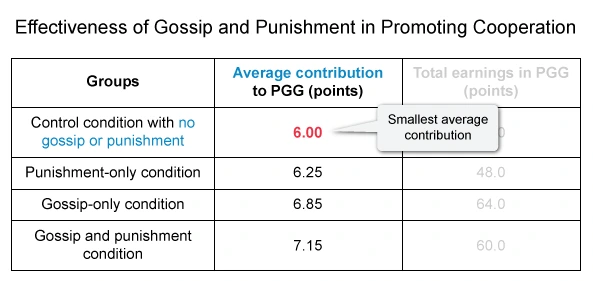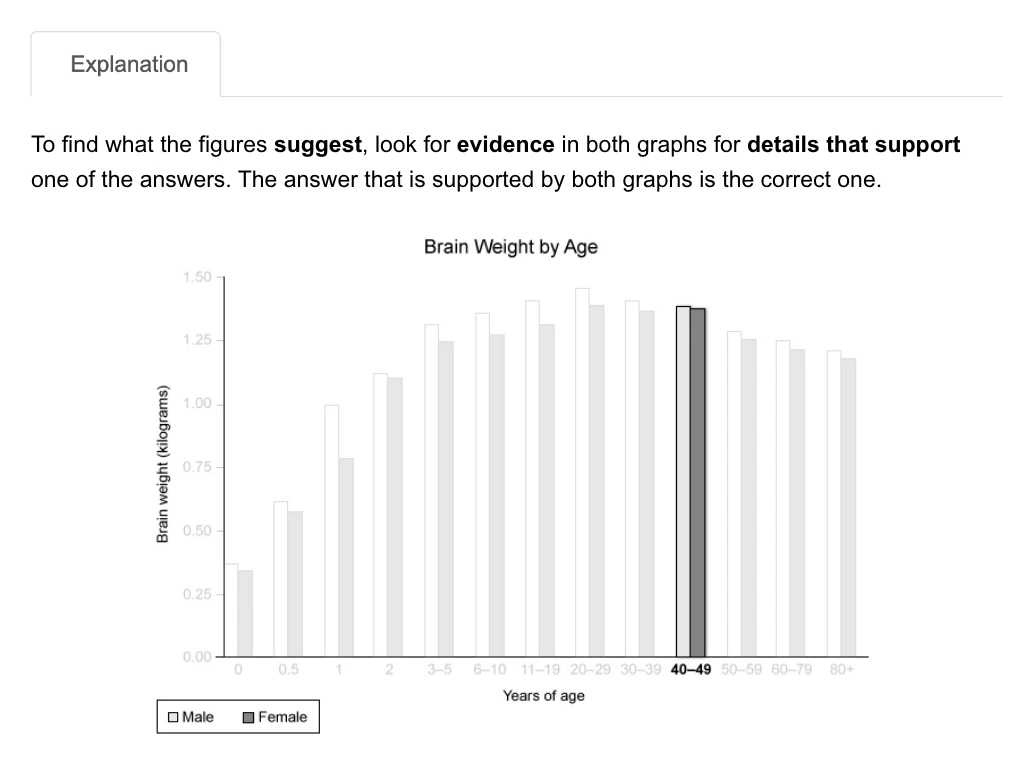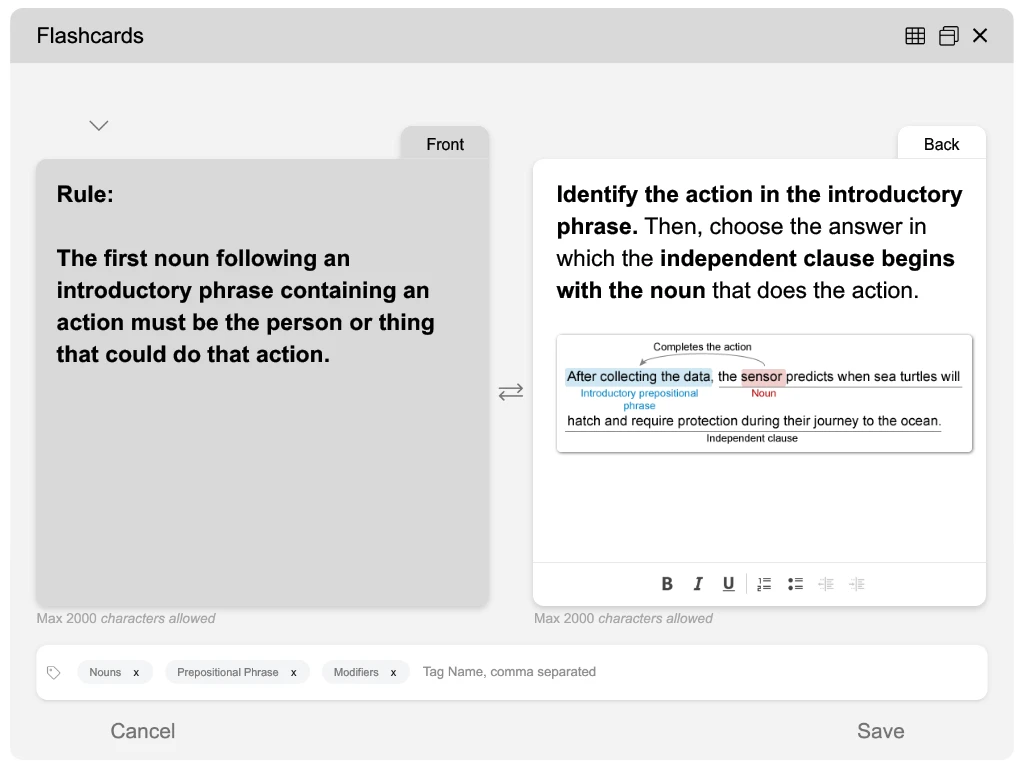SAT® Reading Practice Tests and Questions
Our SAT® Reading Practice Tests and Questions are written by subject matter experts to meet or exceed exam-level difficulty, because we believe that if practice feels like the actual exam, the real thing will feel like practice. Not getting something? We’ve got you covered with in-depth answer explanations and vivid illustrations that make hard stuff easy to understand.
*Digital SAT Reading Practice Bank available July 2023
*The Reading and Writing sections of the SAT will be combined in the US starting March 2024
Benefits of Practicing SAT Reading Exam-Like Questions
Unlimited Exam-level Practice
Customized to Your Needs
Understand the Why
SAT Reading Sample Questions
Passage 1
Since the introduction of the genetically modified (GM) FLAVR SAVR tomato in 1994 and the successful sales of transparently labeled GM tomato paste by Safeway and Sainsbury supermarket chains from 1996 to 1999, genetically modified crops have become a topic of public controversy. Although FLAVR SAVR and the tomato paste have vanished from the supermarket shelves, in 2013 GM crops were grown on more than 175 million hectares globally, by millions of farmers, many of them in developing countries. However, this has not helped to build broad trust in the safety and environmental, as well as economic, benefits of the fastest technology ever adopted by farmers in the history of agriculture….
Despite numerous scientific studies showing that GM crops and food are safe for the consumer and the environment, arguments persist, often incited by opponents’ unsubstantiated and misleading claims. Often, as members of organizations whose incomes rely on fueling public skepticism, they suggest that… GM crops are harming the environment and hurting farmers economically, especially in developing countries.
The reason for these lingering perceptions, especially in Europe, is that a large-scale statistical and scientific assessment providing the necessary, factual information on GM crops was missing. A recent analysis of all the relevant data since 1995 now fills this gap. Authors Matin Qaim, professor of food economics and rural development, and his colleague Wilhelm Klümper found that, on average, production of GM crops reduced chemical pesticide input by 37%, increased crop yields by 22%, and increased farmers’ profits by 68%. These numbers are significant and compelling considering that the accumulated land area planted with GM crops during the last 18 years represents an agricultural production area of more than 150% of the size of countries such as the US or China.
The positive impact of GM crop adoption on yield is especially encouraging because this means that GM crops can produce more on less land. In summary, the data reveal conclusively that there are considerable benefits of GM crop adoption for both the environment and the economic well-being of farmers—facts that are often misrepresented in the public debate. Even if opposition and false claims continue to spur public skepticism, farmers must be allowed to choose and grow the crops—GM or non-GM—that improve their economic situation and help them to contribute to global food security.
Passage 2
Proponents touting the safety of GMOs (genetically modified organisms) for agriculture say engineered crops will help end world hunger and benefit Earth’s climate. Even if, despite ongoing debate, GMOs are safe for consumption, they are no panacea. Groups advocating most loudly for GMOs often include those who stand to make the most money from their use: big business owners of genetic patents, plant growers, and international trading partners. Economic interests that may accompany GMOs have the potential to create power inequities in many industries with consequences for consumers as well. Taken to its extreme, corporations could control the world’s diet. Thus, while it is advisable to consider who will be helped by GMOs, an informed perspective will also consider who will be harmed.
In recent decades, there has been an enormous concentration of the plant breeding market, mainly due to patent protection of genetic combinations and regulatory requirements. In the past, hundreds of plant breeders supplied the global food chain; today the world market is dominated by only a handful of large operators. In 2009, almost 80% of the world seed market was controlled by just ten companies, the first three of which monopolized as much as 50%. The same multinational corporations also controlled 75% of the global agrochemical industry—and its revenue—encompassing not only the genetic improvement of plants, but also food, plant protection chemicals, energy, and pharmaceutical industries. Often, they manufacture complementary products, such as genetically modified plants made resistant to a particular pesticide marketed by their own company. This concentration allows a small group of corporations to exercise considerable control over the entire production chain of food and related products, putting at risk the freedom of choice for growers, the accessibility of prices for consumers, open scientific innovation, and genetic diversity….
Among the arguments frequently advanced to support the use of GMOs is the need to end world hunger, but genetically modified plants can never solve the problems related to hunger and poverty. Global food supply difficulties arise not so much from production problems as from distribution since global production is equivalent to over 150% of global consumption. Most agricultural land in developing countries is used to produce high-end products for export to the West, like feed for livestock for meat and milk. Ninety percent of Europe’s soybean imports go to produce biofuel and plastics. The increase in non-food use of edible agricultural products has pushed up the prices of raw materials and foodstuffs on the world market, which has done nothing but exacerbate food insecurity and poverty in the world. Consequently, a political and economic solution is more needed than genetic experimentation.
1. “Genetically Modified Crops: The Truth Unveiled”
2. “Spread and Potential Risks of Genetically Modified Organisms”
The “concentration” (line 43) can be inferred as one designed for
- problem solving.
- scientific innovation.
- commercial influence.
- efficient management.
P2: In the past, hundreds of plant breeders supplied the global food chain; today the world market is dominated by only a handful of large operators. In 2009, almost 80% of the world seed market was controlled by just ten companies, the first three of which monopolized as much as 50%. The same multinational corporations also controlled 75% of the global agrochemical industry—and its revenue—encompassing not only the genetic improvement of plants, but also food, plant protection chemicals, energy, and pharmaceutical industries. Often, they manufacture complementary products, such as genetically modified plants made resistant to a particular pesticide marketed by their own company. This concentration allows a small group of corporations to exercise considerable control over the entire production chain of food and related products….
Read the lines in the answers for the text evidence question that follows this question. Then, examine the word’s surrounding information to identify its meaning, and then draw a logical conclusion about why the author uses it.
The pronoun “this” refers to what multinational corporations do, as identified in the previous sentences. The “concentration” refers to companies that control “food, plant protection chemicals, energy, and pharmaceutical industries.”
“Commercial” relates to business, and because these companies have significant control “over the entire production chain of food,” this “concentration” is designed for commercial influence.
(Choice A) Selling plants that are resistant to the pesticide you make doesn’t exactly qualify as solving a problem. It more likely shows interest in making money in as many fields as possible. Therefore, the “concentration” is more likely designed for commercial influence than problem solving.
(Choice B) Because control is the defining feature of their concentration, not innovation, it is more likely designed for business than science.
(Choice D) Efficiency has to do with using resources without wastefulness. There is no information in the paragraph to suggest whether this “concentration” manages itself efficiently.
Things to remember:
Pronouns such as “this” offer clues about where to look for information from which to draw a conclusion.
“My aunt will be down presently, Mr. Nuttel,” said a very self-possessed young lady of fifteen named Vera. “In the meantime you must try and put up with me.”
Framton’s sister had written him letters of introduction and explained that most of the citizens of the town were nice. Framton wondered whether Mrs. Sappleton, the lady to whom he was presenting one of the letters, came into the nice division. “Do you know many of the people round here?” asked the niece when she judged that they had had sufficient silent communion.
“Hardly a soul,” said Framton, “but my sister was staying here, at the rectory, you know, some four years ago, and she gave me letters of introduction to some of the people here.”
“Then you know practically nothing about my aunt?” pursued the self-possessed young lady.
“Only her name and address,” admitted the caller. He was wondering whether Mrs. Sappleton was in the married or widowed state. An indefinable something about the room seemed to suggest masculine habitation.
“Her great tragedy happened just three years ago,” said the child. “That would be since your sister’s time.”
“Her tragedy?” asked Framton; somehow in this restful country spot tragedies seemed out of place.
“You may wonder why we keep that window wide open on an October afternoon,” said the niece, indicating a large French window that opened on to a lawn.
Framton replied, “It is quite warm for the time of the year, but has that window got anything to do with the tragedy?”
“Out through that window, three years ago to a day, her husband and her two young brothers went off for their day’s shooting. They never came back. In crossing the moor to their favorite snipe-shooting ground they were all three engulfed in a treacherous piece of bog. Their bodies were never recovered. That was the dreadful part of it.” Here the child’s voice lost its self-possessed note and became falteringly human. “Poor aunt always thinks that they will come back some day, they and the little brown spaniel that was lost with them, and walk in at that window just as they used to do. That is why the window is kept open every evening till it is quite dusk–.”
She broke off with a little shudder. It was a relief to Framton when the aunt bustled into the room with a whirl of apologies for being late in making her appearance. “I hope you don’t mind the open window,” said Mrs. Sappleton briskly. “My husband and brothers will be home directly from shooting, and they always come in this way. They’ve been out for snipe in the marshes to-day, so they’ll make a fine mess over my poor carpets. So like you men-folk, isn’t it?”
Then she suddenly brightened into alert attention—but not to what Framton was saying. “Here they are at last!” she cried. “Just in time for tea, and don’t they look as if they were muddy up to the eyes!” Framton shivered slightly and turned towards the niece with a look intended to convey sympathetic comprehension. The child was staring out through the open window with dazed horror in her eyes. In a chill shock of nameless fear, Framton swung round in his seat and looked in the same direction. In the deepening twilight three figures were walking across the lawn towards the window; they all carried guns under their arms. A tired brown spaniel kept close at their heels. Noiselessly they neared the house, and then a hoarse young voice chanted out of the dusk: “I say, Bertie, why do you bound?”
Framton grabbed wildly at his stick and hat; the hall-door, the gravel-drive, and the front gate were dimly-noted stages in his headlong retreat.
“Here we are, my dear,” said the bearer of the white mackintosh, coming in through the window, “fairly muddy, but most of it’s dry. Who was that who bolted out as we came up?”
“A most extraordinary man, a Mr. Nuttel,” said Mrs. Sappleton. “He dashed off without a word of good-bye or apology when you arrived. One would think he had seen a ghost.”
“I expect it was the spaniel,” said the niece. “He told me he had a horror of dogs. He was once hunted into a cemetery somewhere on the banks of the Nile by a pack of pariah dogs and had to spend the night in a newly dug grave with the creatures snarling and grinning and foaming just above him. Enough to make anyone lose their nerve.”
Fiction, in such cases, was her specialty.
1. Munro, H. H. (Saki). “The Open Window.” Beasts and Super-Beasts. London: The Bodley Head, 1914.
Which choice best supports the conclusion that the narrator views Vera as a convincing actress?
- Lines 9–10 (“Then…caller”)
- Line 21 (“Here…human”)
- Lines 31–32 (“Framton…comprehension”)
- Lines 43–44 (“I expect…dogs”)
Here the child’s voice lost its self-possessed note and became falteringly human.
Note what the question asks and examine the lines given in the answer choices to find details indicating the narrator’s views about Vera as a convincing actress.
 |
The narrator is usually not a character in the story unless it is told from that individual’s 1st person point of view. |
Vera explains that the reason her aunt leaves the window open is that she expects the men who died to return. After listening to this story, the narrator states that “the child’s (Vera’s) voice lost its self-possessed note and became falteringly human.” In other words, her voice becomes unsteady, almost as if she is holding back tears.
Because Vera pretends sadness so effectively, Framton completely believes her story. Therefore, the person telling the story sees Vera is a convincing actress based on details in Line 21 (“Here…human”).
(Choice A) In lines 9–10, Vera determines that Framton doesn’t know her aunt, but this dialogue does not suggest she is acting.
(Choice C) Lines 31–32 describe Framton’s reaction to the aunt’s statement but don’t include details about Vera that suggest she has been acting.
(Choice D) Lines 43–44 introduce Vera’s second fictional story, but nothing about her actions implies that she is acting.
Things to remember: When asked what the narrator believes, avoid mistaking one of the characters for the narrator when selecting your answer.
I love John Steinbeck’s books. I’ve reread them many times since my childhood. I was lucky to be introduced to Steinbeck’s work before I was forced to read it in high school; otherwise, I’d probably hate his writing as much as I hate all the other books that I studied in school.
But there I go, off on a tangent again.
In The Grapes of Wrath, Steinbeck points out that people who have known struggle survive hard times better and thrive in good times. He suggests that experiencing hardship provides a key—a level of grit, if you will—that enables people to grow exponentially once the hardship has been removed because they apply the lessons they learned to the new, positive situation. In other words, when people overcome a challenge, they often learn how to achieve a better outcome.
Twenty years ago, when my life came crashing down after my company eliminated my high-level position, I felt sorry for myself, as most people would. But my best friend Leslie dragged me to a medical supply shop owned by her aunt. A nurse by trade, this battle-axe aunt had become frustrated with the poor-quality medical equipment her geriatric patients received and opened her own shop to provide supplies that met her exacting standards.
Despite her extensive medical training, her business knowledge was nonexistent. Sample equipment loitered haphazardly wherever space was available. A dusty oxygen cylinder sat stolidly in the window display, as if this lone sentinel could entice potential customers to push open the uninspiring glass door and experience the wondrous freedom awaiting within. The store was located on a side street with little traffic. This shop had as much chance of success as I had of maintaining my extravagant lifestyle without income.
Yet, my attention was grabbed by an antique wheelchair. This ancient contraption seemed to speak to me of circumstances far worse than my own. At the time, I needed a reminder that the bottom could always be lower.
Leslie asked her aunt to hire me, but that stalwart lady told her that she preferred to hire someone with medical experience, not to mention more style. She looked me up and down, likely judging my sweats and sneakers, and finally decided to direct all her comments to Leslie. It was as if I were not standing in front of her, as if she were explaining to a nonresponsive patient’s family what was necessary for their relative’s well-being. Leslie, always my biggest supporter, was adamant. She explained that I had grown up in a family of nurses, that I had been pre-med in college myself, and that I would not be intimidated by medical jargon. I also knew marketing, I interjected, and would love to help her bring in more business. She thought it over briefly and then decided (telling Leslie instead of me) that she would hire me temporarily until she found someone with better qualifications.
What I didn’t know at the time was that the first person she hired, a young man with a nursing degree, had found being on his feet for eight hours a day and lugging equipment back and forth to be too much manual labor. He left without giving notice. The second person she hired, a woman who had been a nursing assistant for several years, had a great deal of trouble showing up for work consistently.
If either of these two medical professionals had a better work ethic, my life would have taken a different path. I didn’t realize how my work habits guided my fate until a few years ago when the aunt happened to mention it. She had not believed for one second that I would last in the position. She claimed my success was due to her excellent training.
I worked for the high-standards healer for twenty years while the business increased eight-fold, thanks to my marketing expertise. It just goes to show that success is possible when difficulties can be overcome.
What does the narrator suggest about her own narrative style?
- She tends to depend greatly on repetition.
- She shows characters’ emotions through dialogue.
- She has a habit of getting off topic.
- She acknowledges that she overemphasizes details.
P2: But there I go, off on a tangent again.
To determine what a narrator suggests about her own narrative style, locate the place in the passage where the narrator describes her way of telling stories.
 |
Use the information in text evidence questions that follow to locate the place in the passage where the answer can be found. |
Use the lines provided in the next question to locate where the narrator directly states something about her storytelling style. The narrator interrupts her opening discussion of Steinbeck’s work, saying that she is “off on a tangent [sudden change of topic] again” before getting back to her main point. The word “again” directly states that changing topics is a habit (usual way of doing something). Therefore, the narrator suggests that she has a habit of getting off topic.
(Choices A, B, and D) None of these choices are supported by a direct statement the narrator makes regarding her narrative style.
- Choice A: One sentence in P7 repeats the phrase “as if,” but the narrator doesn’t say whether she often repeats herself.
- Choice B: The narrator mentions she felt sorry for herself, but she doesn’t directly express these feelings through dialogue (two or more characters talking to each other).
- Choice D: The passage does emphasize details. (Ex. “Sample equipment loitered haphazardly…”). However, the narrator doesn’t confess that she overemphasizes them.
Things to remember:
Locate the place in the passage where the narrator directly discusses how she expresses herself and select an answer choice that makes a similar statement.
I remember him first as a chance guest in our house by the side of the Black Sea—a big, deep-chested man in a badly wrinkled pongee suit, who missed his train because we children had drawn him into a game of hide-and-seek. I can still hear his laughter-filled voice demanding fiercely, “Where are they? Where are they?” as he flung himself about the room, making wide detours to avoid our feet, which protruded from under the cloth-hung table. He stayed the night with us, and our child-world changed forthwith.
During the two years which followed, the play-times of Babanchik and his children were inextricably bound with ours, and the distance between our homes grew very short. At Christmas we danced around the scintillating tree in his spacious Tiflis house, and at Easter he helped us with the beating of the innumerable eggs which go into the Easter bread of Russia, spattering the kitchen wall most dreadfully.
Business brought him often to Batum so often that we fell into the habit of racing down to the pasture-bars every Saturday to wait for the afternoon train. It was long and wearying, that walk back, on the days when the train clattered by without pausing. But on other days, when, just this side of the cliff, the engine whistled to announce the stop, the walk home was a march of triumph. Two summers we spent together in that half-starved village high in the Caucasus Mountains, where we lived on bread and eggs, reeking with the wild garlic which grew thick among the wheat; ran, bare of head and foot, over the pine-grown canyons; and loved every moment of it.
It was in those two summers that we came to know Babanchik best and to adore him accordingly. It was he who led our marvelous expeditions to the neighboring peaks, his clothes steaming with the effort of that leadership—he who showed us where to look for mushrooms, and later fried those mushrooms for us. His mind settled, wisely and fairly, all our momentous quarrels, and invented countless new and fascinating games when we had tired of the everlasting croquet. But for his “mischievous escapades,” as he called them, we should never have bathed in the yellow water of the mad Kura, water so muddy that it left great streaks across the bath-towels; but for him, we should never have been forgiven for robbing the little forest church of candles with which to rub the porch floor whenever we wanted to dance.
That the merry existence of his vacations was but a small part of his life, we knew, even as we guessed that the man who frolicked with us lived only in the hours of play. For often at tea-time on the porch we came upon the other Babanchik, a bitter and formidable man who talked to father in a voice which, to us, was the voice of a stranger. They made us very wretched, those tea-times, when from an obscure porch corner we watched him stomping up and down along the railing, the smile gone from his eyes, his cheeks flushed, his arms waving wildly. For we could never understand why the man who taught us that it was cruel to step on ants, seemed so ready and eager, at those times, to throttle someone, we knew not whom, unless it were the terrible creature he called the Russian government. It all hurt us inexpressibly. Yet hour after hour we watched him and listened to his long, involved denunciations of oppression and dishonesty and selfishness and class-distinction and many other long words which we could not grasp. And most difficult to fathom was his oft-repeated assertion that he was doing all that talking in behalf of us.
“It is for the children that I fight!” he would shout, stamping feverishly up and down the long porch, while our father calmly nodded his head, waiting for the appropriate moment to voice agreement; “I must fight, for I know what will come to them!” I believe my father’s reticence was a result of his profound respect for Babanchik’s view, for my father rarely found reason to sit quietly while others expressed their opinions on the country’s shortcomings. “Our lives are behind us, yours and mine. But we must make theirs different for them, must keep them away from strait-jacket regulations, must keep them happy and trustful and brave! It is for this that I fight! And I would fight if I knew that I could not change a word of our laws and our statutes!”
He did fight. He fought in the ranks of his employees, that the least of these might claim justice and equality; pleaded with school boards and schoolmasters for patience and generosity toward their charges; and fought—and this was the most bitter fight of all—against those who held in their hands the destinies of his city.
All of which we learned much later. At the time, he was merely our Babanchik, without whom the world could no longer be imagined; who came in the evening to blow out our candles because he had guessed that the memory of his good-night laugh cheated the dark of its dangers; whose rumbling shout awakened us in the morning and opened up for us a new day of unsuspected possibilities.
In the passage, when Babanchik speaks forcefully to their father, the children’s reaction suggests that they are
- assured.
- bewildered.
- angry.
- encouraged.
P5: For often at tea-time on the porch we came upon the other Babanchik, a bitter and formidable man who talked to father in a voice which, to us, was the voice of a stranger. They made us very wretched…. For we could never understand why the man who taught us that it was cruel to step on ants, seemed so ready and eager, at those times, to throttle someone, we knew not whom, unless it were the terrible creature he called the Russian government.
To determine what a reaction suggests, summarize the surrounding details to determine what they reveal.
In P5, the narrator describes another side of Babanchik: “a bitter and formidable man who talked to father in a voice which…was the voice of a stranger.” This unfamiliar side of Babanchik made the children feel “wretched” (miserable) because they “could never understand” how a man who was normally very gentle “seemed so ready…to throttle [choke] someone.”
These details reveal that the children’s reaction to Babanchik’s more forceful side suggests that they were confused, or bewildered.
(Choice A) “Assured” means confident or secure, which doesn’t fit the children’s reaction to Babanchik’s bitter-sounding voice that was so different from their fun-loving playmate.
(Choice C) The passage describes the children as “wretched” (miserable) and unable to understand when Babanchik becomes “bitter” (angry and unhappy). Although Babanchik could be described as angry during these conversations, P5 does not indicate that the children were angry.
(Choice D) Nothing in the paragraph about Babanchik’s angry conversation is described in positive or hopeful words, so there’s no support for saying the children felt encouraged.
Things to remember:
Locate the reaction specified in the question, and read the surrounding details to determine what it reveals about the characters.
Let’s face it: gossips get a bad rap. Smugly looking down from a moral high ground—and secure in the knowledge that we don’t share their character flaw—we often dismiss those who are obsessed with the doings of others as shallow. Indeed, in its rawest form, gossip is a strategy used by individuals to further their own reputations and interests at the expense of others. Certainly, gossip can be used in cruel ways for selfish purposes. At the same time, how many can walk away from a juicy story about one of their acquaintances and keep it to themselves? Surely, each of us has had firsthand experience with the difficulty of keeping spectacular news about someone else a secret. When disparaging gossip, we overlook the fact that it’s an essential part of what makes the social world tick; the nasty side of gossip overshadows the more benign ways in which it functions.
To examine this social behavior, previous studies have used a standard experiment known as a public goods game (PGG). In the game, subjects secretly choose how many tokens to contribute to a shared pool of tokens. The tokens are multiplied by a determined amount, and the payoff is divided evenly among participants, regardless of their individual contributions. The group’s total benefit is maximized when everyone contributes all of their tokens to the pool. Those who contribute an amount that is at or above the group’s average are labeled “cooperators” and those contributing below average or nothing at all are labeled “free-riders.”
Using an online PGG, a recent study considered the effects of both punishment and gossip on group cooperation. After making contributions and receiving earnings, players were informed of other players’ contributions and earnings. Some groups could then punish or gossip about other players through electronic messaging (e-mails). After four rounds of “play,” researchers found that groups that had only the opportunity to administer punishment by imposing “fines” on free-riders saw little improvement in cooperative behavior. Groups with the opportunity to “gossip” about players’ participation were more cooperative and contributed more to the shared pool, increasing participants’ overall earnings and implying that gossip perhaps plays a pivotal role in group dynamics.
Such results suggest that gossip may not be a character flaw, but a highly evolved social skill. Like it or not, we are the descendants of busybodies. Evolutionary psychologists believe that our preoccupation with the lives of others is a by-product of a prehistoric conundrum. According to scientists, because our prehistoric ancestors lived in relatively small groups, they knew one another intimately. To ward off enemies and survive in their harsh natural environment, our ancestors needed to cooperate with in-group members. However, they also recognized that these same in-group members were their main competitors for mates and limited resources. People who were the best at harnessing their social intelligence to interpret, predict—and influence—the behavior of others became more successful than those who were not.
So how does gossip promote cooperation? There are two possible explanations. Sharing secrets is one way people bond because sharing gossip with another person is a sign of deep trust: you’re signaling that you believe that the person will not use this sensitive information against you. In the workplace, studies have shown that harmless gossiping with one’s colleagues can build group cohesiveness and boost morale. Behavioral economists believe that gossip also helps to socialize newcomers into groups by resolving ambiguity about group norms and values. In other words, listening to the judgments that people make about the behavior of others helps the newbie figure out what’s acceptable and what isn’t.
On the flip side, the awareness that others are likely talking about us can keep us in line. Among a group of friends or coworkers, the threat of becoming the target of gossip can actually be a positive force: it can deter “free-riders” and cheaters who might be tempted to slack off or take advantage of others. Studies of California cattle ranchers, Maine lobster fishers, and college rowing teams confirm that gossip is used in a variety of settings to hold people accountable. In each of these groups, individuals who violated expectations about sharing resources or meeting responsibilities became targets of gossip and ostracism. This, in turn, pressured them to become better members of the group.
The bottom line is that we need to rethink the role of gossip in everyday life; there’s no need to shy away from or be ashamed of it. Gossiping that is successful entails being a good team player and sharing key information with others in ways that won’t be perceived as self-serving. It’s about knowing when it’s appropriate to talk and when it’s probably best to keep your mouth shut.
According to the table, the average contribution of players was smallest in the groups that used
- no gossip or punishment.
- punishment only.
- gossip only.
- gossip and punishment
Focus on the table column referred to in the question, which in this case is only the information in the column labeled “Average contribution to PGG (points).”
Because 6.00 is the lowest number in the column for average group contributions, the group with the smallest average contribution is the one with no gossip or punishment.
(Choices B, C, and D) According to the column showing the average contributions to the PGG, the average contributions are larger than 6.00 for the groups in these incorrect answer choices.
Things to remember:
Use the labels in a table to identify which data are needed to answer the question.
Enjoying our questions? Receive them weekly, completely free of charge!
Signup to receive free UWorld questions every week
Get 400 on SAT Reading Section with UWorld
Study content crafted by subject matter experts, assess yourself with exam-level practice, measure your performance, target your weaknesses with focused study, and repeat.
Create Unlimited Practice Tests with Exam-Level Questions
- Generate unlimited practice tests from hundreds of exam-level questions.
- Target your weaknesses by customizing a test based on topic, custom tag, or even just questions you’ve previously gotten wrong.
Create Unlimited Practice Tests with Exam-Level Questions
- Generate unlimited practice tests from hundreds of exam-level questions.
- Target your weaknesses by customizing a test based on topic, custom tag, or even just questions you’ve previously gotten wrong.
Understand Why an Answer is Right or Wrong
- It's not enough to know the right answer. You must understand why it's right or wrong.
- That's why we provide in-depth answer explanations complemented by professionally produced images for every answer choice.
Track Your Progress With Advanced Analytics
- Focus your study sessions to grow, rather than reviewing what you already know.
- Gauge your progress using score predictors, instantly identify your growth opportunities, compare your results with peers, and receive feedback summaries for every test.
Track Your Progress With Advanced Analytics
- Focus your study sessions to grow, rather than reviewing what you already know.
- Gauge your progress using score predictors, instantly identify your growth opportunities, compare your results with peers, and receive feedback summaries for every test.
Features: My Notebook & Flashcards
- Easily create notes or flashcards by clicking, highlighting, and selecting text that you want to review later.
- Customize study aids to suit your learning style and keep them well-organized by topic or custom tag.
- And the best part? Our mobile app ensures that these learning aids are always at your fingertips.
Features: My Notebook & Flashcards
- Easily create notes or flashcards by clicking, highlighting, and selecting text that you want to review later.
- Customize study aids to suit your learning style and keep them well-organized by topic or custom tag.
- And the best part? Our mobile app ensures that these learning aids are always at your fingertips.
Get Exam-Ready with Exam-level Practice!
We believe that if practice feels like the actual exam, then the actual exam will feel like practice. UWorld simulates the actual SAT, so there won’t be any surprises on exam day.
Practice SAT Reading Sample Questions Anywhere at Any Time
Excellent Exam Results Make Happy Students
I just got my SAT scores and I got a 1510! The only prep I did was UWorld and I improved 120 points. UWorld is the real deal! I was able to learn from my mistakes. It is freaking amazing!
Both the SAT and ACT Qbanks have helped to improve my scores immensely, and I feel that the questions are an accurate reflection of questions given on the tests. I liked that for the math questions, they were more difficult compared to the actual test.
It's amazing and it helped me improve my ACT and SAT scores. I've never felt more confident than after using UWorld.











